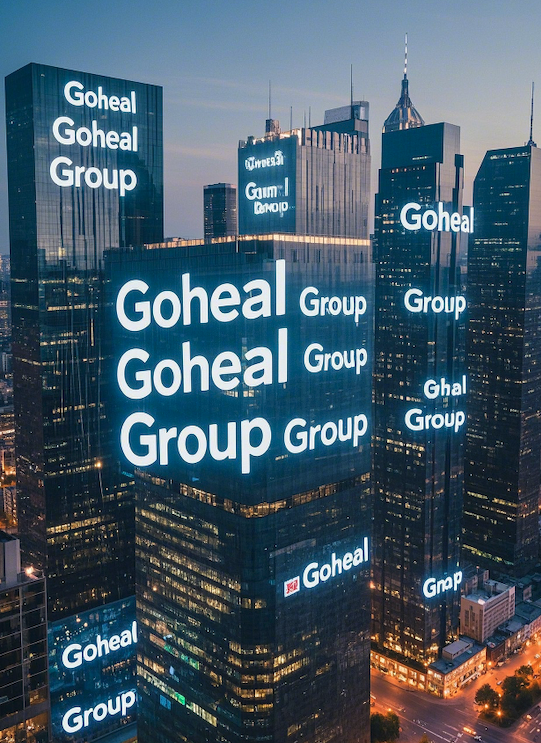When negotiating mergers and acquisitions, many companies often pay attention to transaction prices, payment methods, and post-merger integration plans, but ignore the risks that may be hidden in the transaction structure itself. If the transaction structure is unreasonable, even if the company's financial situation is good and the valuation matches, the acquisition may eventually fail due to compliance issues, breakage of capital chain or conflict of interest.

American Goheal M&A Group
Judging from historical experience, the three most likely types of structural risks in controlling equity acquisitions are leverage out of control, imbalance in betting, and conflicts of interests of shareholders. These problems not only affect the success or failure of mergers and acquisitions, but may even lead to market value collapse, debt defaults, and even regulatory investigations. How to avoid these traps? Goheal combines years of practical experience to provide in-depth analysis for investors and entrepreneurs.
Leverage out of control: Can afford it, but can't afford it
Financing leverage is a double-edged sword. While amplifying returns, it can also accelerate the collapse. When acquiring controlling stakes, many listed companies will choose leveraged buyout (LBO, Leveraged Buyout), that is, use the assets of the target company as collateral and borrow money to complete the acquisition. However, if the leverage ratio is too high, once the cash flow after the merger does not meet expectations, the acquirer may face high interest expenses, which will eventually lead to a break in the capital chain.
One of the most typical cases in history is the leveraged acquisition of US energy giant TXU in 2007. At that time, TXU completed privatization with US$45 billion of high leverage, of which the proportion of its own funds was extremely small, and the remaining funds mainly came from bank loans. However, after the transaction was completed, the energy market was sluggish during the 2008 financial crisis and in the following years, and natural gas prices fell sharply, so TXU was unable to repay its huge debts and eventually filed for bankruptcy protection in 2014.
In M&A consultation, Goheal has always emphasized leverage ratio control. For example, in a 2022 acquisition transaction involving medical companies, the Goheal team adjusted the debt structure to reduce the leverage ratio from the original 6 times EBITDA to 3 times, and suggested that the acquirer also set up a reserve liquidity to deal with possible future market fluctuations. In the end, the transaction was successfully completed, and the company maintained stable profitability after the merger.
Betting imbalance: Short-term goals vs. Long-term risks
Betting agreements (earn-out) are one of the most dangerous "time bombs" in mergers and acquisitions. Buyers often want to reduce initial acquisition costs through betting terms, allowing sellers to fulfill their performance commitments in the next few years in exchange for higher acquisition consideration. However, if the target company exaggerates its performance expectations and even manipulates its financial reports to achieve its bet goals, it may eventually put the buyer in trouble.
One of the most famous cases is the acquisition of Shengqu Games in 2018. In this transaction, the betting agreement stipulates that the target company needs to achieve a net profit of 2 billion yuan within three years, otherwise the seller must compensate in cash. However, under the pressure of performance betting, the target company inflated its revenue through related transactions, resulting in distortion of financial data. In the end, ST Huatong's acquisition of Shengqu Games not only failed to recover its investment, but also encountered regulatory investigations due to the fraud of financial reports, and its stock price plummeted.
In the design of betting terms, Goheal emphasizes the combination of "soft performance indicators" and "phase assessment". For example, in a retail industry acquisition in 2023, the Goheal team helped the acquirer change the traditional net profit assessment to a combination goal of "market share + cash flow growth rate", and set annually adjusted floating terms to avoid short-term sprints in the target company's performance due to changes in the market environment, affecting long-term development.
Conflict of interest of shareholders: Who is the ultimate winner?
The acquisition of controlling equity is not only a capital transaction, but also a reallocation of shareholder interests. After the transaction is completed, many acquirers find conflicts of interest between the original shareholders, management and new investors, causing the company's operations to fall into a deadlock. For example, some original shareholders still hold some shares after delivery, but their interests are not consistent with the new owner, and even "hypocritical disobedience".
An extreme case occurred in a merger and acquisition case of a technology company in 2021. The founding team of the company still held 30% of the shares after the merger and acquisition, but due to the disagreement with the new management team, internal decision-making was chaotic, and the company's market value was eventually halved, and the founding team was forced to withdraw early.
When dealing with shareholder interest distribution issues, Goheal usually adopts a combination strategy of "equity lock-up period + management incentive plan". For example, in a controlling equity transaction involving SaaS companies in 2022, Goheal recommended that the acquirer establish a three-year exit mechanism, requiring the original shareholders to gradually reduce their shareholding ratio, and at the same time formulate a management equity incentive plan based on performance growth to ensure the stability of the management team after the merger and acquisition. In the end, the company's market value increased by more than 150% less than two years after the merger was completed.
At the end: What do you think? Welcome to leave a message for discussion!
In the capital market, the success of controlling equity acquisition is not only to "buy" a company, but also to "control" a company. The design of the transaction structure determines the future business stability and even affects the life and death of the enterprise. From leverage risks to bet traps, to shareholders' conflicts of interest, unreasonableness in any link will become a hidden danger in the future.
Which industries do you think are the most likely to have trading structure problems in the current capital market? Or have you seen any failed merger and acquisition cases? Welcome to leave a message in the comment area and discuss with Goheal how to achieve truly safe and efficient mergers and acquisitions in a complex market environment!

Goheal Group
[About Goheal] Goheal is a leading investment holding company focusing on global mergers and acquisitions and holdings. It has deeply rooted in the three core business areas of listed company control acquisition, listed company mergers and acquisitions and restructuring, and listed company capital operation. With its deep professional strength and rich experience, it provides enterprises with full life cycle services from mergers and acquisitions to restructuring and then to capital operation, aiming to maximize corporate value and long-term growth of profits.